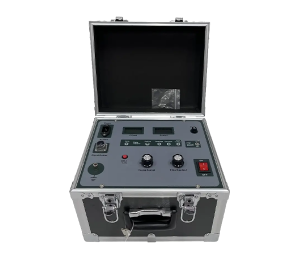 English
English



-
 Afrikaans
Afrikaans -
 Albanian
Albanian -
 Amharic
Amharic -
 Arabic
Arabic -
 Armenian
Armenian -
 Azerbaijani
Azerbaijani -
 Basque
Basque -
 Belarusian
Belarusian -
 Bengali
Bengali -
 Bosnian
Bosnian -
 Bulgarian
Bulgarian -
 Catalan
Catalan -
 Cebuano
Cebuano -
 China
China -
 China (Taiwan)
China (Taiwan) -
 Corsican
Corsican -
 Croatian
Croatian -
 Czech
Czech -
 Danish
Danish -
 Dutch
Dutch -
 English
English -
 Esperanto
Esperanto -
 Estonian
Estonian -
 Finnish
Finnish -
 French
French -
 Frisian
Frisian -
 Galician
Galician -
 Georgian
Georgian -
 German
German -
 Greek
Greek -
 Gujarati
Gujarati -
 Haitian Creole
Haitian Creole -
 hausa
hausa -
 hawaiian
hawaiian -
 Hebrew
Hebrew -
 Hindi
Hindi -
 Miao
Miao -
 Hungarian
Hungarian -
 Icelandic
Icelandic -
 igbo
igbo -
 Indonesian
Indonesian -
 irish
irish -
 Italian
Italian -
 Japanese
Japanese -
 Javanese
Javanese -
 Kannada
Kannada -
 kazakh
kazakh -
 Khmer
Khmer -
 Rwandese
Rwandese -
 Korean
Korean -
 Kurdish
Kurdish -
 Kyrgyz
Kyrgyz -
 Lao
Lao -
 Latin
Latin -
 Latvian
Latvian -
 Lithuanian
Lithuanian -
 Luxembourgish
Luxembourgish -
 Macedonian
Macedonian -
 Malgashi
Malgashi -
 Malay
Malay -
 Malayalam
Malayalam -
 Maltese
Maltese -
 Maori
Maori -
 Marathi
Marathi -
 Mongolian
Mongolian -
 Myanmar
Myanmar -
 Nepali
Nepali -
 Norwegian
Norwegian -
 Norwegian
Norwegian -
 Occitan
Occitan -
 Pashto
Pashto -
 Persian
Persian -
 Polish
Polish -
 Portuguese
Portuguese -
 Punjabi
Punjabi -
 Romanian
Romanian -
 Russian
Russian -
 Samoan
Samoan -
 Scottish Gaelic
Scottish Gaelic -
 Serbian
Serbian -
 Sesotho
Sesotho -
 Shona
Shona -
 Sindhi
Sindhi -
 Sinhala
Sinhala -
 Slovak
Slovak -
 Slovenian
Slovenian -
 Somali
Somali -
 Spanish
Spanish -
 Sundanese
Sundanese -
 Swahili
Swahili -
 Swedish
Swedish -
 Tagalog
Tagalog -
 Tajik
Tajik -
 Tamil
Tamil -
 Tatar
Tatar -
 Telugu
Telugu -
 Thai
Thai -
 Turkish
Turkish -
 Turkmen
Turkmen -
 Ukrainian
Ukrainian -
 Urdu
Urdu -
 Uighur
Uighur -
 Uzbek
Uzbek -
 Vietnamese
Vietnamese -
 Welsh
Welsh -
 Bantu
Bantu -
 Yiddish
Yiddish -
 Yoruba
Yoruba -
 Zulu
Zulu
circuit breaker analyzer
Understanding Circuit Breaker Analyzers Essential Tools for Electrical Maintenance
In today's industrial landscape, the reliability and safety of electrical systems are paramount. Circuit breakers serve as vital components within these systems, acting as protective devices to prevent overloads and short circuits. To ensure their optimal performance, circuit breaker analyzers have become indispensable tools for engineers and technicians focused on maintaining electrical integrity.
A circuit breaker analyzer is an advanced testing device designed to evaluate the functionality and performance of circuit breakers. These analyzers help detect weaknesses and assess the operational capabilities of circuit breakers, ensuring they respond appropriately under fault conditions. Regular testing and analysis not only enhance the efficiency of electrical systems but also prolong the lifespan of circuit breakers.
So, how do circuit breaker analyzers work? Primarily, these devices perform a series of tests, including insulation resistance testing, contact resistance testing, timing analysis, and coil voltage testing. Each of these tests provides valuable data regarding the electrical characteristics and operational readiness of the circuit breaker.
1. Insulation Resistance Testing This test assesses the integrity of the insulation within the circuit breaker, helping to identify potential insulation failures that could lead to short circuits or electrical faults.
2. Contact Resistance Testing This critical analysis measures the resistance at the contacts of the circuit breaker. High contact resistance can lead to excessive heat generation, which may result in failure during operation. By ensuring low resistance, the circuit breaker can operate efficiently.
circuit breaker analyzer

3. Timing Analysis This feature evaluates the mechanical operation of the circuit breaker, ensuring that it opens and closes within the specified time frame during fault conditions. Timely operation is crucial to minimize system damage and enhance safety.
4. Coil Voltage Testing This test checks the voltage supplied to the circuit breaker’s coil. Ensuring proper coil voltage is essential for reliable tripping of the breaker under fault conditions.
One of the significant advantages of using a circuit breaker analyzer is the ability to create detailed reports based on the testing results. These reports facilitate informed decision-making regarding maintenance and repair needs. By identifying issues before they lead to catastrophic failures, organizations can save significant costs and prevent downtime.
Moreover, circuit breaker analyzers are equipped with advanced features such as data logging and trend analysis. This capability allows for monitoring changes over time and helps in predictive maintenance strategies. By analyzing historical data, maintenance teams can anticipate potential problems and address them proactively.
In addition to enhancing safety and reliability, circuit breaker analyzers also contribute to compliance with national and international safety standards. Regular testing and maintenance of circuit breakers are often mandated to ensure adherence to these standards, making analyzers not just useful but also necessary tools in the electrical maintenance realm.
In conclusion, circuit breaker analyzers are crucial for assessing the health of circuit breakers within electrical systems. With their capability to perform multiple tests and generate insightful reports, these devices ensure that circuit breakers operate reliably, safeguarding both equipment and personnel. As technology continues to advance, the integration of smarter features in circuit breaker analyzers will undoubtedly enhance their effectiveness, further promoting safety and efficiency in electrical maintenance practices. Understanding and utilizing these tools is essential for any organization committed to maintaining a robust electrical infrastructure.
-
Ensuring SF₆ Gas Safety: Introducing PUSH’s Integrated SF₆ Analyzer for Dew Point, Purity, and Decomposition MonitoringNewsJul.10,2025
-
Exploring the Main Types of Industrial Endoscopes and Their Applications Across IndustriesNewsJul.04,2025
-
Testing Equipment Industry Sees Major Advancements in 2025: Smart & Precision Technologies Lead the WayNewsJun.06,2025
-
Applications of Direct Current Generators in Renewable Energy SystemsNewsJun.05,2025
-
Hipot Tester Calibration and Accuracy GuidelinesNewsJun.05,2025
-
Digital Circuit Breaker Analyzer Features and BenefitsNewsJun.05,2025



